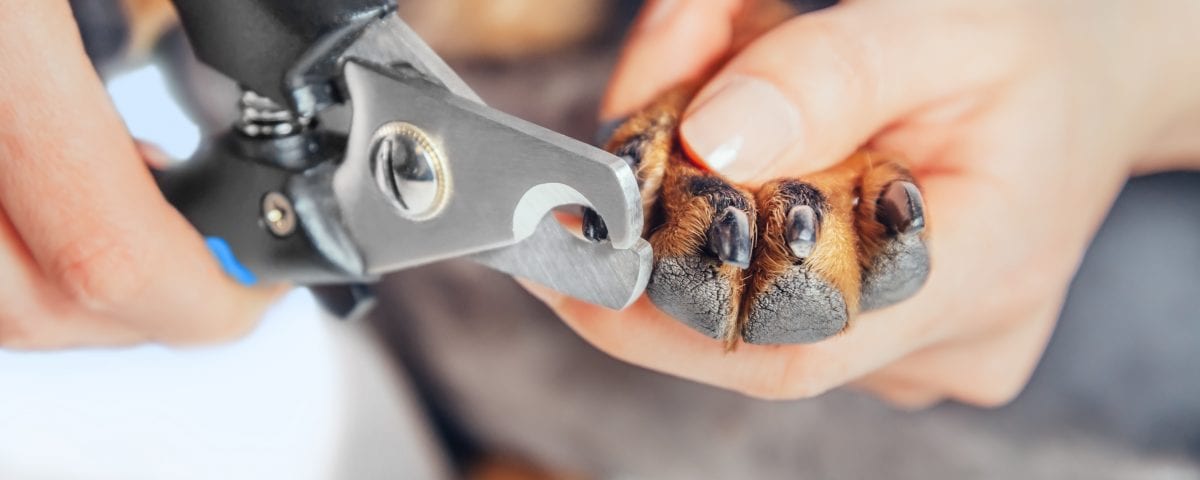How to Trim Your Dog’s Nails at Home

Nail trimming is an essential part of being a dog owner. Long, overgrown nails can cause pressure that is painful and distressing for your pet. Long nails can also mean scratches on you, your furniture, and your floors. If you can hear your dog’s nails clicking on a hard surface, it’s time for a trim.
Your dog’s toenail is made up of the hard nail itself and the quick. The quick is the inner part of the nail that provides blood supply, which looks pink when it’s visible. It is important to avoid cutting the nail down to the quick, as it bleeds quite a bit and makes the nail very sensitive.
Ensuring you have the best nail clippers for you and your dog is key. The most common option is the “scissor” type trimmer but electric nail grinders are also an option. When purchasing nail trimmers, make sure you buy the correct breed size, as they are designed specifically for small or large breed dogs. Make sure your trimmers are always sharp or your grinder bits and tips are new to ensure a quick, clean, and pressure-free cut.
Getting your self and your dog familiar with the nail trimmers or grinder is another essential step. Make sure you know exactly how the tools work to ease your task. Allow your dog to investigate the tool before using it, as well. Most dogs do not like their feet being touched in general, so a foreign object can be frightening for them. If your dog is young, getting them used to having their feet touched and manipulated can make future trimmings a breeze!
To avoid making the task of nail trimming stressful for your pet, don’t feel the need to get all their feet done at one time. You can clip one paw at a time, with rest or playtime in between, so trimming doesn’t turn into a dreadful task for you both. After you feel comfortable with the process, it’s time to get trimming!
- Hold your dog’s foot firmly, but gently. Be confident so your dog doesn’t get nervous.
- Snip off small pieces at the end of each toenail. Don’t try to take off huge pieces at a time, as you might get too deep and snip the quick. If the nail feels spongey while you’re cutting, stop immediately because that is their quick! Keep snipping off small pieces until the nails are at a safe and healthy length. If you are using a grinder, the process is the same. Hold the paw steady and slowly grind a little of each nail off at a time.
- In the event you do hit the quick, try to stop the bleeding immediately. A nail cauterizer, styptic powder, or cornstarch can help to stop or lessen the bleeding, but you may have a bit of clean up work to do. Cutting the quick is extremely painful, so your dog may remember the experience and associate nail trimming with pain, making future nail trims more difficult.
Your dog’s activity level and access to paved surfaces will determine how often you have to trim their nails. Generally, most dog parents trim their pet’s nails every three to six weeks. Don’t forget to reward your pet after a successful trim! Give them a treat and lots of loving to further enforce that nail trims are a good thing.

